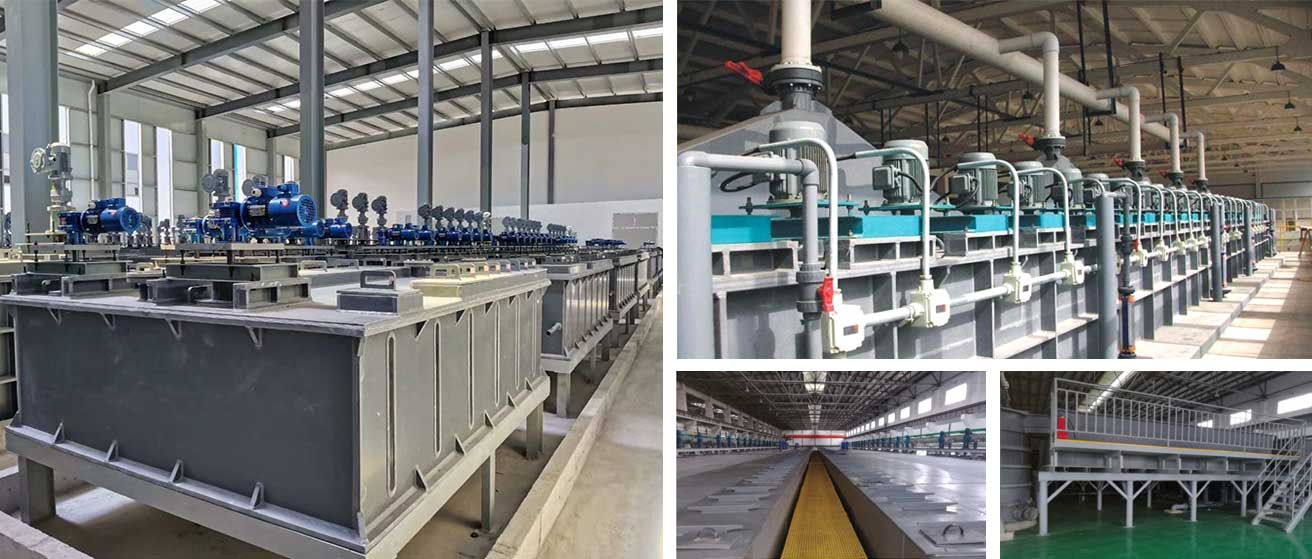Managing corrosion in procedures involving acidic
nickel leaching process, including sulfuric acid leaching, is vital to make certain the integrity and longevity of gadget. Here are strategies and issues for corrosion control in acidic nickel leaching techniques:
Material Selection:
Corrosion-Resistant Materials: Choose materials for gadget production which are especially proof against corrosion by means of sulfuric acid. Stainless steels, specially people with high nickel content material, and specialised alloys like Hastelloy are usually employed for their corrosion resistance.
Protective Coatings:
Chemical-Resistant Coatings: Apply chemical-resistant coatings to the surfaces of equipment exposed to the acidic leaching environment. These coatings act as a barrier, shielding the underlying fabric from direct touch with sulfuric acid.
Inhibitors and Corrosion Resistant Additives:
Corrosion Inhibitors: Introduce corrosion inhibitors into the leaching method to mitigate the corrosive outcomes on gadget surfaces. These inhibitors form a protecting layer on metal surfaces, lowering the fee of corrosion.
Temperature Control:
Optimal Operating Temperature: Control the running temperature of the leaching manner. Elevated temperatures can boost up corrosion, so keeping temperatures within premiere stages helps limit the corrosive effect on gadget.
PH Monitoring and Control:
pH Adjustment: Regularly reveal and manage the pH of the leaching solution. Sulfuric acid creates an acidic surroundings, and keeping a solid pH inside the desired range allows prevent competitive corrosion.
Passivation:
Passivation Processes: Implement passivation procedures for stainless-steel device. Passivation entails treating the steel surfaces to enhance their corrosion resistance through forming a defensive oxide layer.
Equipment Design:
Corrosion-Resistant Design: Optimize the design of gadget to reduce regions prone to corrosion, such as crevices and areas with stagnant or slow-transferring leach answer. Smooth and polished surfaces reduce the likelihood of corrosion initiation.
Regular Inspection and Maintenance:
Scheduled Inspections: Conduct normal inspections of gadget to perceive signs and symptoms of corrosion, put on, or harm. Implement a proactive maintenance agenda to cope with any issues right away and prevent equipment failure.
Materials Compatibility Assessment:
Compatibility Testing: Before imposing device, behavior substances compatibility checks to make certain that the selected materials can face up to the specific situations of the acidic nickel leaching procedure.
Flow Control and Velocity:
Controlled Flow: Optimize the flow patterns and pace of the leach answer. Adequate glide helps save you the buildup of corrosive dealers and promotes the continuous renewal of the solution, reducing the capability for localized corrosion.
Corrosion Monitoring Systems:
Real-Time Monitoring: Install corrosion monitoring structures that offer actual-time information on the corrosion charges of device. This lets in for proactive interventions and adjustments to decrease corrosion.
Emergency Shutdown Procedures:
Safety Protocols: Establish emergency shutdown techniques in the occasion of a corrosion-related incident. These protocols help prevent further damage, defend employees, and allow for timely repairs.
Waste Management:
Proper Disposal: Implement right waste control practices for spent leach answers to prevent environmental contamination. Managing waste correctly also can limit the risk of corrosion all through disposal strategies.
